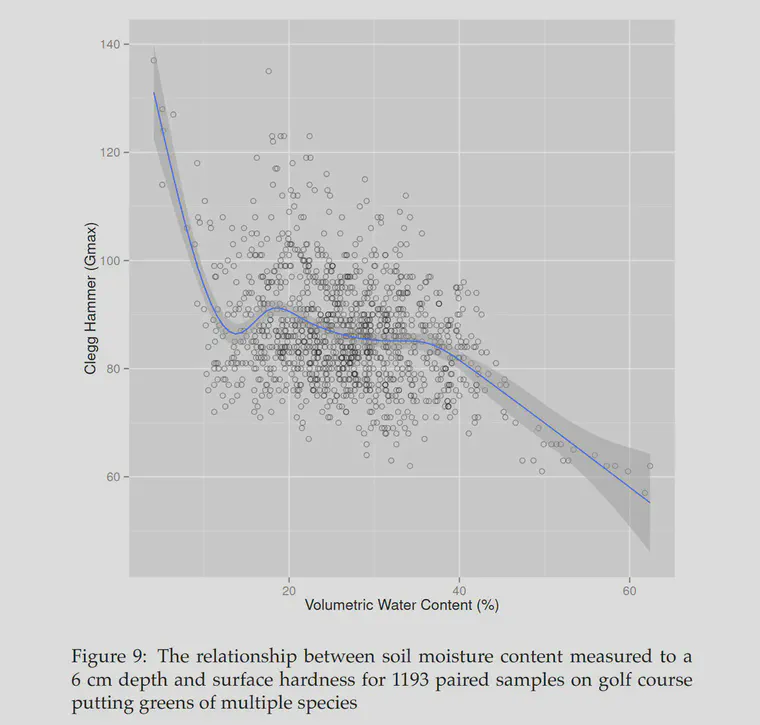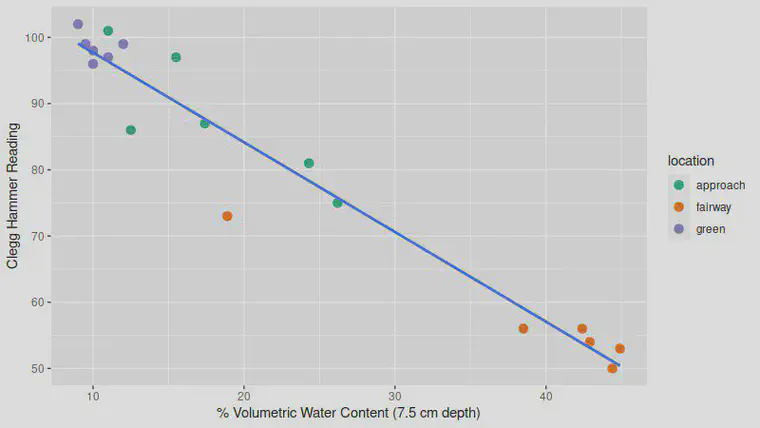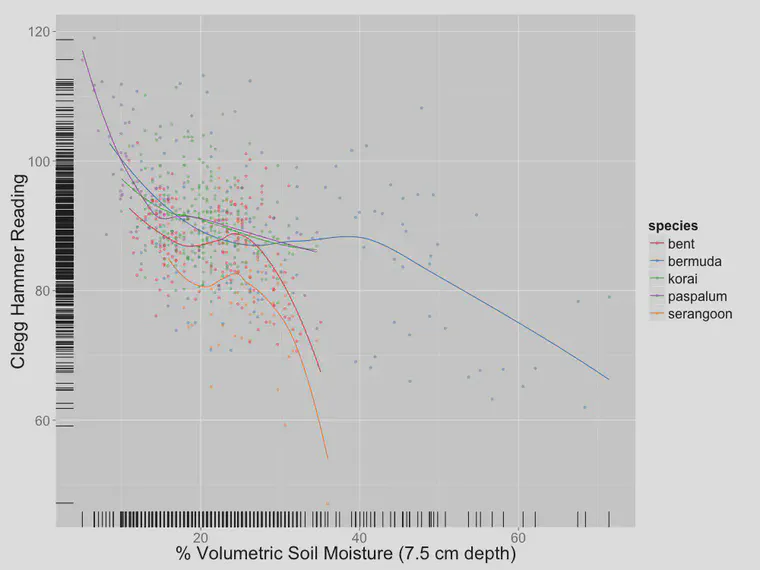Relationship between soil water content and turfgrass surface hardness
I use the terms surface hardness and surface firmness interchangeably, but I usually prefer surface hardness.
In the report I prepared in August 2012 I included this figure, showing the relationship I measured between soil water content (using a Delta-T Device Theta Probe with 6 cm rods) and surface hardness (using a 500 g Clegg Impact Soil Tester).

One can’t make an accurate prediction of surface hardness from soil moisture in general, because soil types and organic matter content vary, so the surface hardness can be quite variable across a wide range of soil moisture. It does seem that once soil moisture gets above 35% (by volume), it can be difficult to produce a firm surface.
However, for a consistent soil type and species and turf age, there can be a good relationship, as seen below. I’m sure that at many golf courses, there would be a consistent relationship between soil moisture and surface hardness. But that same level of soil moisture may not translate to the same level of surface hardness at another golf course. These data are from a golf course with seashore paspalum everywhere, and with a wall-to-wall sandcap.

Since I prepared the August 2012 report, I’ve collected another 647 paired measurements of soil moisture and surface hardness, this time measuring soil moisture to a 7.5 cm depth with the TDR-300. These results show a similar result to that measured previously. There is some relationship between soil moisture and surface hardness, but the location effect is important. One really needs to study this relationship at one’s site, as Scot Dey is doing, to find how soil moisture influences surface hardness.
The same data 647 measurements collected from August 2012 to February 2014 are shown by species in the chart below.
